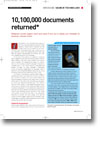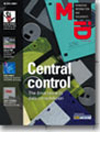
10,100,000 documents returned*
- Article 6 of 26
- M-iD, April 2004
Enterprise search engines need more work if they are to satisfy user demands for accurate, relevant results.
Page 1 | Page 2 | All 2 Pages
Simon Atkinson, UK managing director at search specialist Verity agrees. “People have been spoon-fed bilge in the past: 'press a button, it's all you need to worry about'. The reality is that you should start off with automation, use it, then tune the system manually. Most vendors now accept that manual tuning is the best thing you can do. Full automation isn't feasible; it's a labour-saving device not a panacea.”
Until that point, organisations wanting to take advantage of taxonomies to improve their search capabilities had better be prepared to invest time and money. Rita Knox, research director and vice president of Gartner Research, estimates that “through 2006, more than 70% of firms that invest in unstructured information-management initiatives will not achieve targeted return on investment due to under investment in taxonomy building.” Few professionals, she says, have the intuition or the skills to build “robust, extensive and long-lived” taxonomies.
Working out which categories documents belong to also requires a combination of automation and manual work. The 'semantic web', a concept being championed by web co-founder Sir Tim Berners-Lee, for example, adds machine-readable tags to web pages that help search engines determine where in a taxonomy the pages belong. Metadata standards may also be exploited by search engines for this purpose. But both approaches depend on some human intervention.
In fact, it seems likely that for many years to come, improvements to search engines will come in the form of gradual evolutions rather than massive leaps.
Page 1 | Page 2 | All 2 Pages


